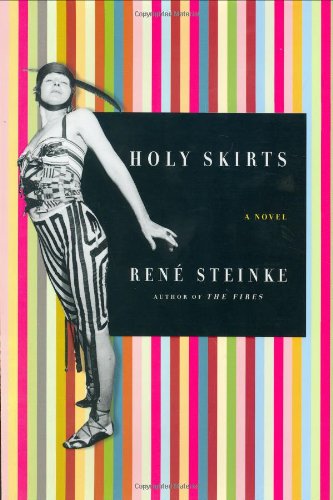Holy Skirts
“I cannot bow—I can only fling myself.” –The Baroness Elsa von Freytag-Loringhoven
René Steinke’s gorgeous second novel is a fictional biography of the Baroness Elsa von Freytag-Loringhoven—Dada poet, artists’ model, performance artist, collagist and Greenwich Village eccentric. While WWI raged in Europe, The Baroness stalked the streets of Manhattan with a flashing red light attached to her bustle or a brassiere made of tin cans and green twine. As Marcel Duchamp once said, she was “…not a futurist. She is the future.”
After leaving her home in Swinemünde in 1904, a succession of jobs—performing in a nude tableau vivante in a Berlin cabaret, poor repertory actress, artist’s model, poet—and three thieving husbands gradually strip Elsa down to her essence: a survivor who lives with her passions plastered on her forehead. Holy Skirts gives us the picture not only of her “larger than life” life but also her bewildered struggle with syphilis, which she contracted from her mother at birth. Syphilitic dementia is both her muse (whispering poems in her ear) and her tormentor, providing no sane counterbalance to her impulsive and outrageous behavior. The line between genius and madness was her tightrope.
Despite occasional anachronisms (i.e., Elsa ponders Mount Rushmore fifteen years too early), on the whole Steinke’s narrative is as sensual and delicious as her subject. She tells us immediately that the Baroness “had a theory that she simply had more heat in her limbs, more blood than most girls… so her body’s chemistry gave her these pleasures other girls were not so lucky to feel.” Luckily for us, Holy Skirts is pulsing with this heat and blood, so we can finally feel what the Baroness feels.










